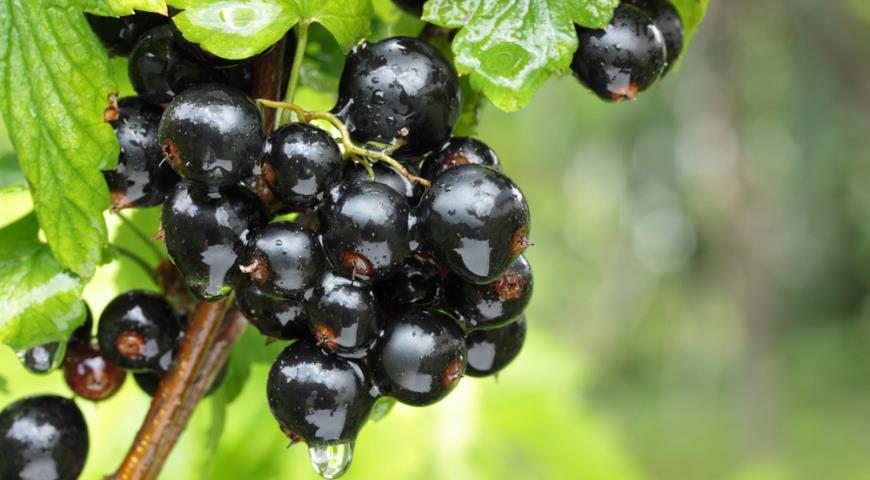
In this article, we will consider effective fertilizers for blackcurrant.
The content of the article
- Top dressing and processing of blackcurrant in early spring in March immediately after winter: advice of experienced gardeners
- Currant processing in spring boiling water: technology, tips
- The better to feed and process black currants in the spring in April before flowering: tips
- The better to feed and process black currants in the spring during flowering in May: Tips
- How to treat black currants in spring from diseases, pests, a kidney tick, rust, aphids?
- How and in what quantity to use ammonia, urea for feeding and processing blackcurrant in the spring?
- How and in what quantity to use iodine for feeding and processing blackcurrant in the spring?
- How and in what quantity to use boric acid to feed and treat blackcurrant in the spring?
- How and in what quantity to use ash for feeding and processing blackcurrant in the spring?
- How and in what quantity to use yeast to feed blackcurrant in the spring?
- How and in what quantity to use hydrogen peroxide for feeding and processing blackcurrant in the spring?
- How and in what quantity to use manure for feeding blackcurrant in the spring?
- How and in what quantity to use potassium permanganate to feed and process blackcurrant in the spring?
- How and in what quantity to use copper sulfate for feeding and processing blackcurrant in the spring?
- How and in what quantity to use carbamide to feed and process blackcurrant in the spring?
- How and in what quantity to use a burgundy mixture for feeding and processing blackcurrant in the spring?
- How and in what quantity to use superphosphate to feed and process blackcurrant in the spring?
- How and in what quantity to use complex fertilizers to feed blackcurrant in the spring?
- Video: Spring currants
Black currant is one of the most favorite berries of most people of our country. It has a number of useful properties, useful trace elements, and is also a storehouse of vitamin C. At the same time, black currants do not require large care costs and can grow in almost any conditions.
In order to make the crop maximum and protect the bushes from diseases and insects, we will consider the basic rules and principles for growing this berry in the personal plot, as well as analyze the basic drugs used for processing and feeding the plant.
Top dressing and processing of blackcurrant in early spring in March immediately after winter: advice of experienced gardeners
It is worth taking care of currants in the early spring. They begin to do top dressing even when light snow lies. According to gardeners at this time, the soil is very wet, and this, in turn, will allow fertilizers easily and quickly dissolve and nourish the currant.
Despite the fact that currant is completely unpretentious and undemanding, caring for it is still needed, if you at least want to get a large beautiful crop.
Processing of currant bushes in early spring has a number of advantages:
- Promotes plant growth
- Helps destroy harmful insects
- Increases productivity
- Favorably affects the renewal of branches and integrity of the bush after winter

Malina care
The process of currant care consists of several stages:
- Remove dry, sick and broken branches
- The upper parts of the frozen shoots are shortened to intact parts
- Cut branches of the bush must be burned to prevent the spread of diseases and parasites to other plants
- A moderate amount of ash is poured onto the soil plot undercurrent and loosened
- It is also necessary to dig the earth around the plant
- Then humus is covered with a bush to improve fertility
- Fertilizer can be applied in several ways, for example, fertilizing the bush on all sides on top of the ground, pour the bush with fertilizer. However, it is better to use the method of “deep” fertilizer: from the plant’s trunk you need to do about 0.5-0.7 m and around the barrel we dig a furrow with a depth of 0.4 m. Fertilizer must be poured into this furrow, which is previously divided with water.
- The first spring top dressing is very important for currants and feed the plant during this period with nitrogen -containing fertilizers
- Excellent for early feeding of currants is suitable for urea, bird droppings, no superfluous will be fed, with yeast, yeast
Currant processing in spring boiling water: technology, tips
After the process of destroying dead leaves and branches, it is necessary to strike at the pests. After all, it is they, most often the cause of the disease of the bush. At the same time, most insects do not die during frosts, which means that with the onset of spring, their population will quickly increase. In order to prevent their reproduction, it is worth using one of the most popular ways to process currants - with boiling water.
This process is carried out in early March, following the following instructions:
- Before opening and swelling of the kidneys, the plant is examined.
- A large number of cocoons at the ends of the branches, as well as multiple processes, indicate the presence of buds (malicious insects).
- It is necessary to scald the bush from all sides with steep boiling water, starting from the upper part.
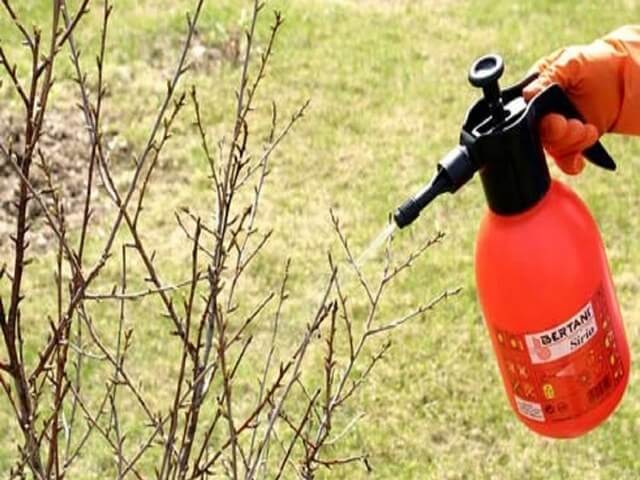
Skaling boiling water
- With a large number of cocoons, it is recommended to repeat the procedure over the next 2-3 days.
- We also advise you to dig and burn currants if in the early spring you found a mass settlement of aphid larvae or huge kidneys.
- In this case, it is necessary to carefully examine the neighboring plants and scald them with boiling water for prevention.
The better to feed and process black currants in the spring in April before flowering: tips
Experienced gardeners know that the processing process and means for feeding currants differ significantly, depending on the time of year. For example, in April we recommend using:
- Ash
- Tobacco
- Onion
- Garlic
- Washing soap
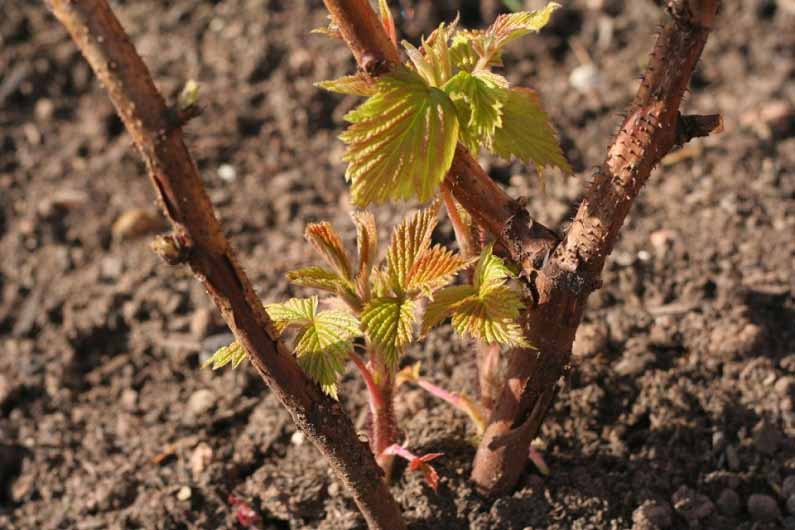
Currant feeding
However, these funds are effective only in case of proper use.
- 100 g of ash is dissolved in 10 liters of warm water. This solution is treated with bushes, spraying them from all sides. It is necessary to continue the procedure for 3 days.
- To use ash and tobacco, you need to take 200 g of each component and dilute them in 10 liters of warm fluid. This mixture is maintained for 24 hours, after which you need to treat the currant.
- To use onion infusion, you need to take a kilogram of the vegetable and pour 10 liters of boiling water, then withstand 6 hours, separate the nutrient mixture from the pulp and spray the plant in the evening at least 3 days
- The use of soap solution is also effective. To do this, it is necessary to dissolve in 4 liters of water 15 g of laundry soap 72% and process each bush over the entire height.
- The use of garlic is also relevant. To do this, mix 400 g of vegetables and 4 liters of boiling water, insist a mixture of a day, strain and spray each currant bush.
The better to feed and process black currants in the spring during flowering in May: Tips
During the flowering period of currant bushes, top dressing is effective, as well as additional processing of the plant. For this purpose, we recommend using:
- Nitrogen fertilizers
- Phosphorus powders
- Manure
- Bird litter
- Green herbs

Currant care during flowering
In order to correctly use these drugs, it is necessary to adhere to certain rules for their preparation.
- 100 g of bird droppings or manure must be diluted in 10 liters of warm water. This mixture is used for watering plants.
- Also, as top dressing, they advise you to cook a green decoction. Mix in equal proportions dandelion flowers, nettles and quinoa leaves, as well as chamomile. Pour inflorescences with boiling water to the maximum. Next, close the container with a lid and insist the solution for 2 weeks. The resulting broth is recommended to mix with water in equal proportions before use.
- All types of fertilizers are used comprehensively with others. Therefore, prepare: phosphorus (20 g), potassium (10 g) and nitrogen (10 g). They need to be diluted in 1 bucket of water (10 l) and pour the contents under 1 plant. If you need to feed a larger number of bushes, then double the composition of fertilizers and water.
How to treat black currants in spring from diseases, pests, a kidney tick, rust, aphids?
To combat harmful insects and diseases of blackcurrant bushes, we recommend that the following ingredients are used:
- Chlorofos solution
- Carbofos drug
- Fertilizer "Colloid sulfur"
- Bordeaux mixture
- "Fundazole"
- Solution "Copper sulfate"
- "Furanon"
- "Intavir"

Pests of leaves
To achieve maximum benefit, it is important to observe the correct proportions of the preparation of solutions, as well as choose those fertilizers that are designed for each type of disease and insects.
- The solution "chlorofos", "carbophos" and "colloid sulfur" are effective against a kidney tick, various insects and aphids. It is necessary to use them in early spring.
- “Fundazole” and “Copper Cupor” eliminate rust and powdery dew. They are used not only for spraying, but also as top dressing of bushes.
- The Bordeaux mixture and Intavir help to exterminate the aphid. They must be used for spraying in early March.
How and in what quantity to use ammonia, urea for feeding and processing blackcurrant in the spring?
Urea and ammonia are one of the most proven and popular means for processing and top dressing of blackcurrant bushes. Experienced gardeners were divided into 3 stages: their use:
- To landscaping the bush
- 14 days after the appearance of the first leaves
- In the process of maturation of berries
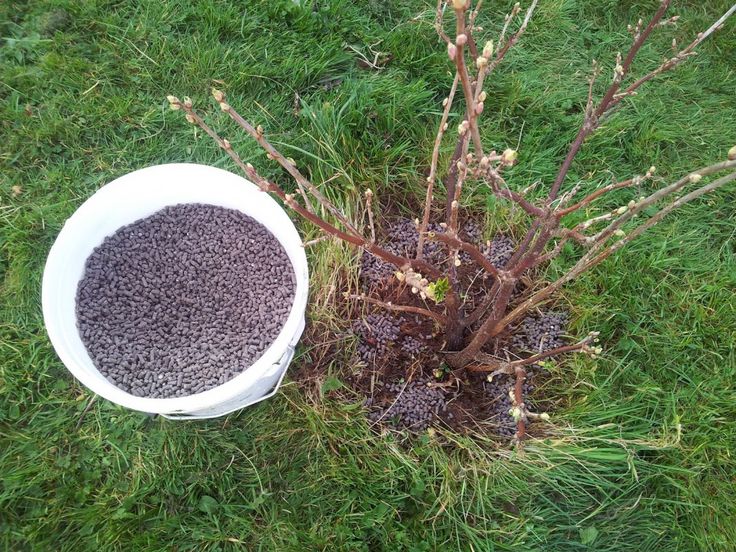
Currant feeding
For the correct use of fertilizers, it is necessary to adhere to such recommendations:
- In early March, dry branches are removed from the bush and fed. For this, it is necessary to dissolve 2 urea packages in 10 liters of liquid and pour the contents under the plant on the central root
- In the process of ripening of the fruits, 1 package of urea needs to dissolve in 10 liters of water and pour on the roots
- To eliminate aphid 50 ml of ammonia, mixed with 50 g of laundry soap and a mixture of 10 liters of liquid is poured. With the help of this solution, plants are sprayed 1 time
- For young seedlings, a mixture is used, which consists of 10 liters of water and 30 g of urea
- Soil top dressing should be carried out no earlier than 10 days after the previous
How and in what quantity to use iodine for feeding and processing blackcurrant in the spring?
Iodine is a natural antiseptic. This drug is useful not only for people, but also for plants. To overcome insects, it is recommended to use this medicine in May, following the following instructions:
- Make a broom of birch leaves and thin branches
- 1 packaging of iodine solution 5% is diluted in 1 bucket of liquid
- With the help of a broom, the mixture is sprinkled on berry bushes throughout the height
- To consolidate the result, the procedure must be repeated after 3 days
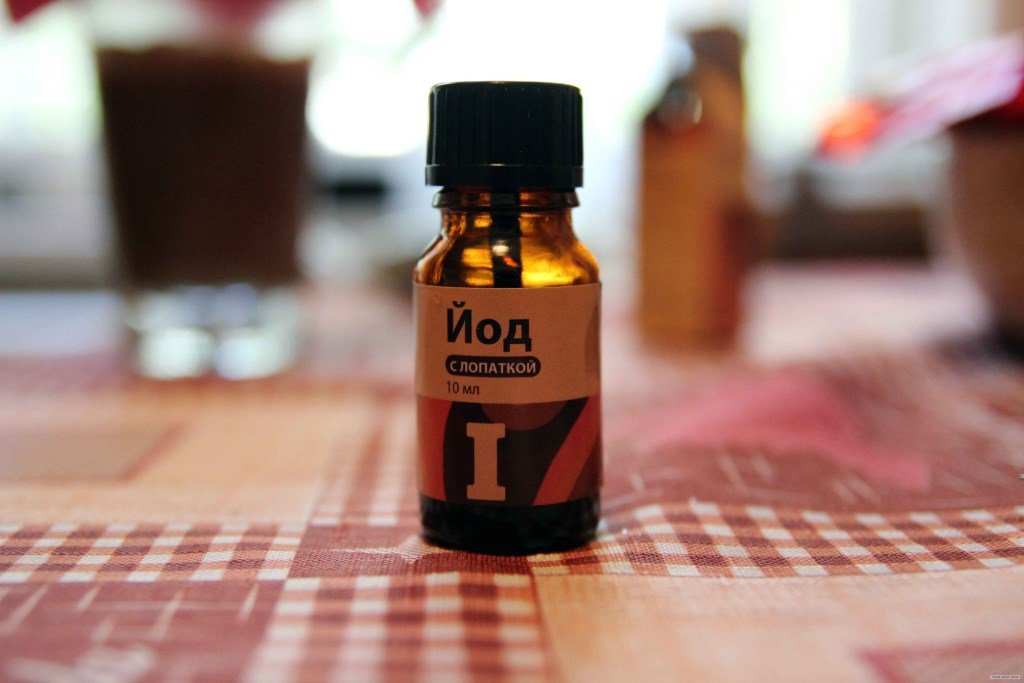
Iodine for feeding
The following recipe is also suitable as spraying:
- 1 packaging of the iodine solution is mixed with 500 ml of natural serum or sour milk
- 500 ml of warm water is added to the mixture
- Using a spray gun, the mixture is applied to the leaves of the bush
How and in what quantity to use boric acid to feed and treat blackcurrant in the spring?
As a fertilizer of blackcurrant, the use of boric acid is no less popular. To feed the soil in early spring, you must adhere to the following instructions:
- 2 g of acids mix with a liter of water
- Mix thoroughly with a wooden stick or other devices that will not contact the surfaces used
- The solution is poured into a bucket of standard sizes and the liquid is added to the top
- The required amount of the mixture is poured into the soil under each bush
- For use, use hot water, but not boiling water. Otherwise boric acid compounds will not dissolve
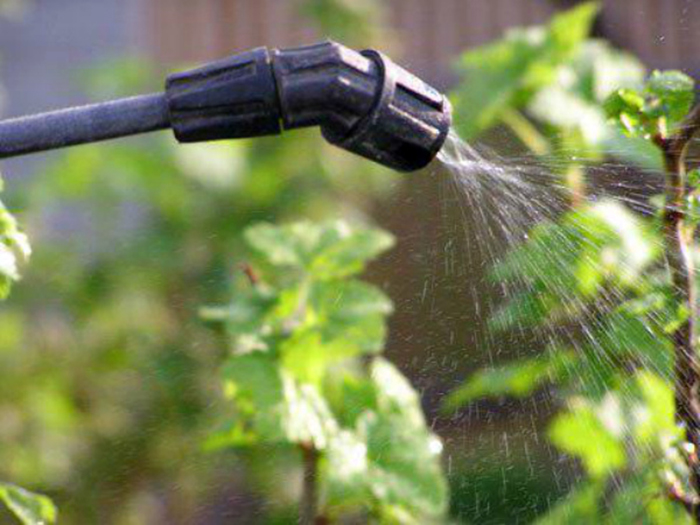
Top dressing
The following recipe is also effective for processing currants:
- 10 g of the drug is dissolved in a liter of water
- Mix
- Cool
- Pour into a bucket
- Add 9 liters of water
- With the help of a spray gun, a tool is applied to the leaves of all currant bushes
How and in what quantity to use ash for feeding and processing blackcurrant in the spring?
Ash is a natural organic tool that helps to get rid of pests and insects. In order to prepare a mixture for spraying, you should adhere to the following stages of cooking:
- In a bucket of standard volume, warm water is connected (filling it to the top) and 100 g of ash
- All components are thoroughly mixed
- Process plants with a spray gun
- This process repeats 3 days in a row in the spring of the year
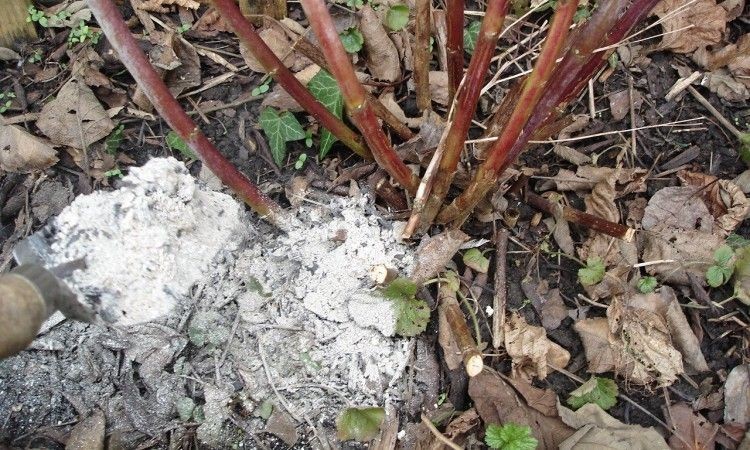
Ash for bushes
The following method is effective as soil feeding:
- 100 g of ash is connected to a liter liter liter
- The resulting mixture is diluted in 10 liters of water
- The ingredients are thoroughly mixed
- 150-200 ml of the mixture pour in each bush of plants
- This method must be used in early March
How and in what quantity to use yeast to feed blackcurrant in the spring?
The yeast contains a range of beneficial micro- and macroelements, as well as a large number of vitamins of group B. This product is useful not only for people, but also for plants. After all, it accelerates the growth process, and also helps currants become more resistant to pests. One of the most popular recipes for making a spraying mixture is the following:
- 500 g of beer yeast is mixed with 100 g of confectionery sugar
- Add hot water (10 l)
- All components are thoroughly stirred
- The mixture is cooled
- 1 bucket of solution must be used for 1 plant
- The resulting substance is poured into the soil under currants

Yeast for feeding
If there was no brewer's yeast at hand, then you should use food. They are used in this way:
- 10 l of warm water and 150 g of honey are stirred in 1 bucket
- Add 500 g of culinary natural yeast
- All ingredients are stirred until a homogeneous mass is obtained
- For 1 bush, 10 liters of substances are used
- The solution is poured into the ground
It is also effective to use tincture on bread crackers:
- The bucket is placed in 500-600 g of old crossed out bread
- Add warm water to the very top
- 100 g of sugared jam or jam are poured to the mixture
- The resulting fertilizer is watered with the soil of each bush
How and in what quantity to use hydrogen peroxide for feeding and processing blackcurrant in the spring?
Hydrogen peroxide helped to grow a rich harvest to many generations of our citizens. The use of this drug is still no less popular. After all, with its help you can get rid of aphids and pests. Therefore, each gardener should arm yourself with this recipe:
- 30 ml of hydrogen peroxide is poured into a bucket of standard volume
- Stir with 10 liters of warm water
- This mixture is sprayed by the leaves of the plant
- It is also useful to pour a mixture into the soil in early spring at the rate of 1 liter for 1 liter to prevent currant diseases

Spraying currants
Here is another method of how you can use hydrogen peroxide to disinfect the soil:
- We take 3-4 l of water
- 50-60 ml of hydrogen peroxide
- Mix the ingredients
- Such a composition can be watered with currants, as well as spray it
- Hydrogen peroxide should take 3%
You can spray currants with the following tool:
- 3 l of water
- 100 g of sugar
- 100 ml of hydrogen peroxide
- Mix the ingredients and spray the bushes with a solution
How and in what quantity to use manure for feeding blackcurrant in the spring?
Manure is known to all gardeners and he is very popular. This tool is very effective as feeding almost all plants, because it has potassium, nitrogen, phosphorus and many other nutrients useful and necessary for plants.
As a top dressing of plants in early March, the use of the following recipe is useful:
- Mix 250 g of manure and 10 l of warm water
- Mix the mixture thoroughly until dissolved
- Process the soil of the plant at the rate of 400 ml for 1 bush

Fertilizer manure
You can mulch the soil in this way:
- We take 8-11 kg of manure for each bush
- This amount of product should be laid out under the bush of currants from all sides
When using the litter of birds, the fertilizer concentration will be as follows:
- 1 kg of litter
- 10 liters of liquid
The best manure for the power of currant bushes is:
- Avian
- Horse
- Bovine
How and in what quantity to use potassium permanganate to feed and process blackcurrant in the spring?
There are many recipes for preparing a means to protect currant bushes. The simplest and most effective method is the following:
- 5 g of potassium permanganate is connected to 3 g of boric acid
- Add 40 g of the drug "Copper Cuporos"
- Pour the ingredients of 10 liters of warm fluid
- Everything is thoroughly stirred
- This mixture is used in the spring to spray plants
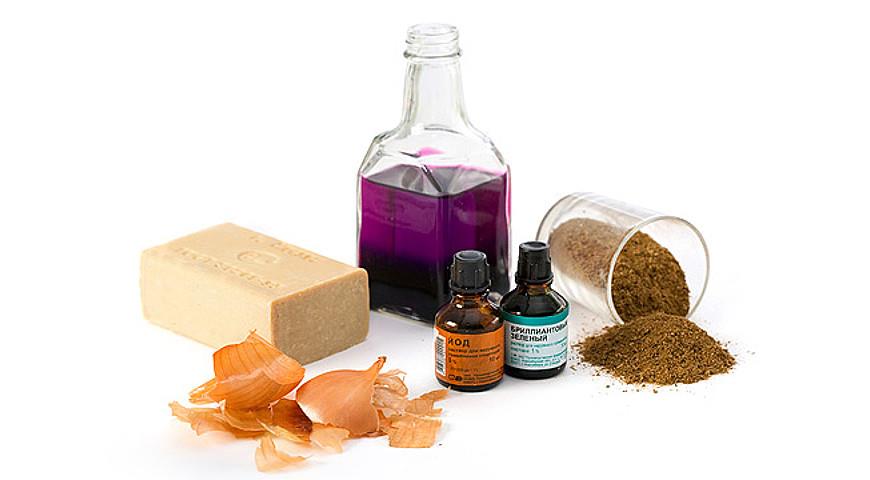
Fertilizer products
You can also use the following recipe:
- 4 g of potassium permanganate
- 10 liters of water
- Mix
- We use as top dressing
Thanks to the use of such a means of currants, the plant bushes will be protected from pests and diseases.
How and in what quantity to use copper sulfate for feeding and processing blackcurrant in the spring?
Copper sulfate helps to get rid of aphids, rust, as well as powdery mildew that so often torment the plants of currants. For the effective use of the drug, it is necessary to adhere to the following instructions:
- 100 g of copper sulfate is placed in a bucket
- Domest warm water is added to the top (10 l)
- Everything is scrupulously mixed
- Use the mixture as top dressing for the soil
- Also using the spray gun effectively spray the mixture to the surface of the bushes
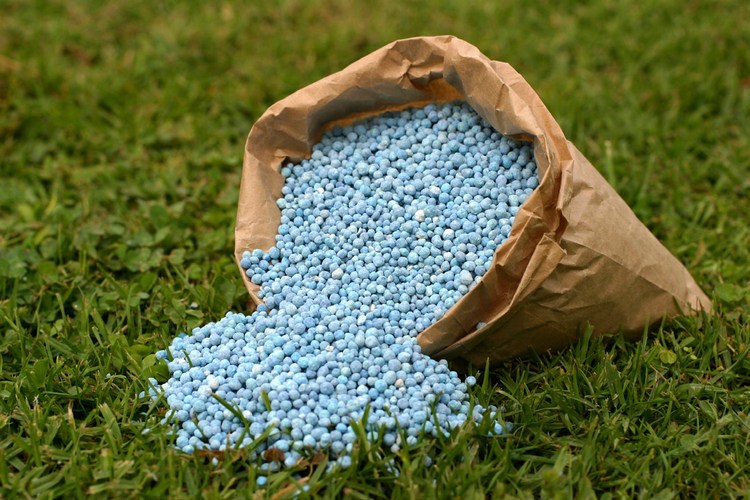
Copper Currants for Currants
Do not forget that many components are best used in combination with others. Therefore, before using a fertilizer, it is better to learn more about it and its use.
How and in what quantity to use carbamide to feed and process blackcurrant in the spring?
Carbamide is the substance that is commonly called "urea" in common people. This tool is popular among all gardeners. With its help, many plants are effectively treated, including black currants. And to achieve maximum benefit, you must follow the following instructions:
- 40 g of urea is diluted in 1 bucket of water (10 l)
- Everything is mixed
- Using a spray gun, the product is applied to currant bush
- It is also recommended to fertilize the soil at the rate of 200 ml for 1 plant
- If the currants are on your site for more than 4 years, it is necessary to multiply the specified dosage in two
The tool does not poorly feed currants, and also fights with harmful insects, so if possible, be sure to use urea.
How and in what quantity to use a burgundy mixture for feeding and processing blackcurrant in the spring?
The Bordeaux mixture is widely used among active fighters with aphids. Its use for blackcurrant is unique. Since the effect of the drug is almost harmless to the plant. In order to get rid of pests, it is recommended to carry out the procedure in early spring and the end of the season, adhering to the following rules:
- Pour water to the top 1 bucket to the top
- 100 g of burgundy mixture is mixed with liquid
- The mixture is sprayed with a spray gun or garden spray, avoiding contact with the soil and root of the plant
- By regularly using this tool, you will save yourself and the plant from such obsessive “guests”, so do not forget to use the burgundy mixture as a “medicinal” product.
How and in what quantity to use superphosphate to feed and process blackcurrant in the spring?
Superphosphates help currant to avoid the “attack” of pests, diseases, as well as increase the crop and its quality. For the maximum benefit of the use of fertilizers, it is necessary to strictly adhere to the rules for their use:
- No more than 60 g of fertilizers are added for young bushes
- The older the plant, the greater the concentration of superphosphates (up to 120)
- Fertilizers are used comprehensively with nitrogen and phosphorus
- To feed the soil, it is recommended to use 30 g of superphosphates and 30 g of potassium without chlorine for 10 l of liquid

Fertilizer for superphosphate
Superphosphate is one of the most popular means that are used to feed currants and many other plants. Therefore, experienced gardeners strongly recommend using this tool.
How and in what quantity to use complex fertilizers to feed blackcurrant in the spring?
Currant bushes are very susceptible to various fertilizers, so they should be used only if the plant is more than 2 years. Fertilizers are used both in a dry and diluted form. Various feeding among gardeners are also popular. The most commonly used:
- Ammonium nitrate
- Cement
- Chilean Selitra
- Lime
- Potassium salt
- Dolomite flour
- Chalk
- Ammonium sulfate
- Potassium sulfate
- Urea
- Potassium sulfate
- Potassium Selitra
- Superphosphates (granular, simple or double)
- Potassium chloride
- Phosphate flour
All fertilizers are divided into groups:
- Phosphorus
- Potassium
- Nitrogen
- Organic
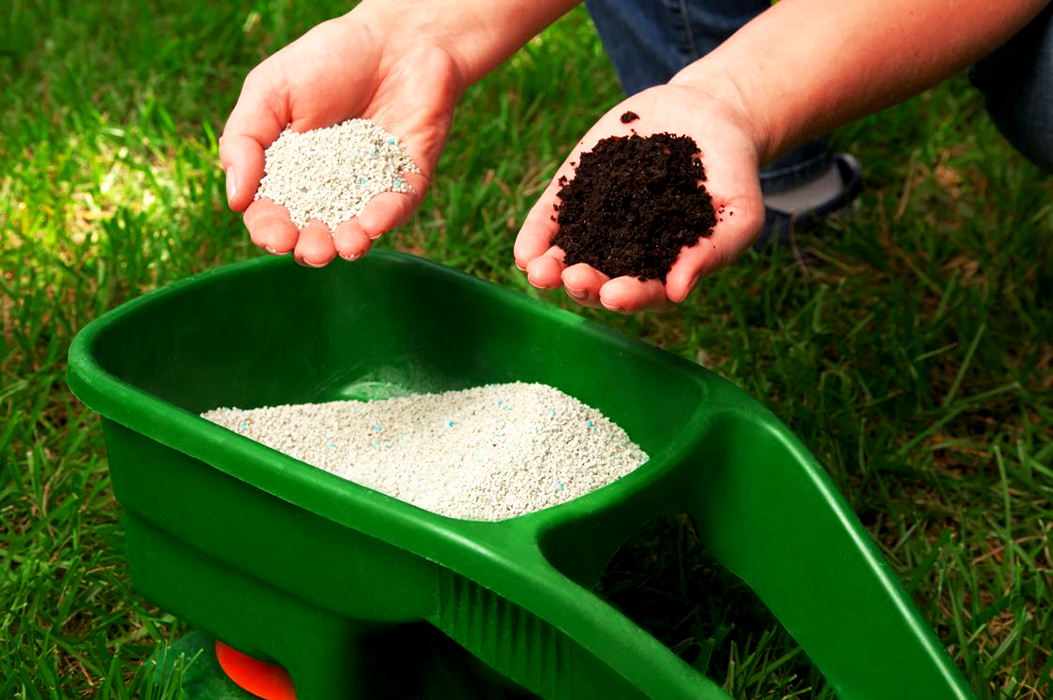
Fertilizers for blackcurrant
Integrated means are called those that include several of the above components. Most often they are used in the autumn period, for early spring, gardeners distinguish effectiveness from the use of nitrogen. The most popular fertilizers of the complex composition suitable for processing currants are:
- Agro-nature (8-12 liters for one plant; used at the end of May)
- AVA station wagon (use 30 g for one bush)
- Biogumus
- Borophoska
- Diammofoska
- Barrel Humat sodium
- Sprout
- Ammofos Extra
All manufacturers of modern fertilizers indicate the dosage, as well as the frequency of permissible use depending on the age of the bush, season and goals for which you want to apply it. Therefore, the volume and regularity of processing must be selected in accordance with the instructions.
Black currant is the most popular berry in our country. However, in order for the crop to please you and your family, you need to carefully monitor the growth and condition of the bushes, use natural and mineral fertilizers, regularly water and take care of the plant in every possible way.
